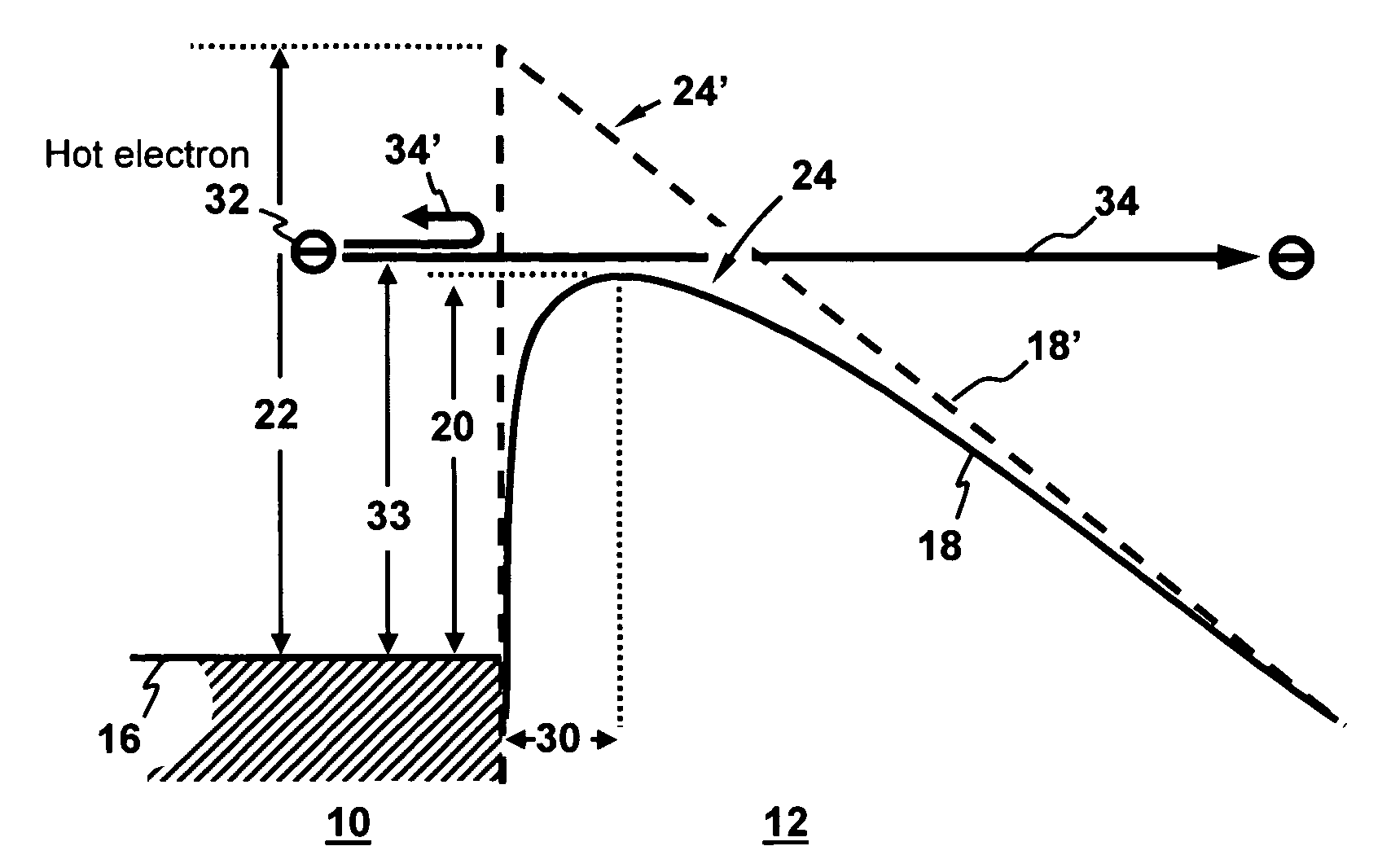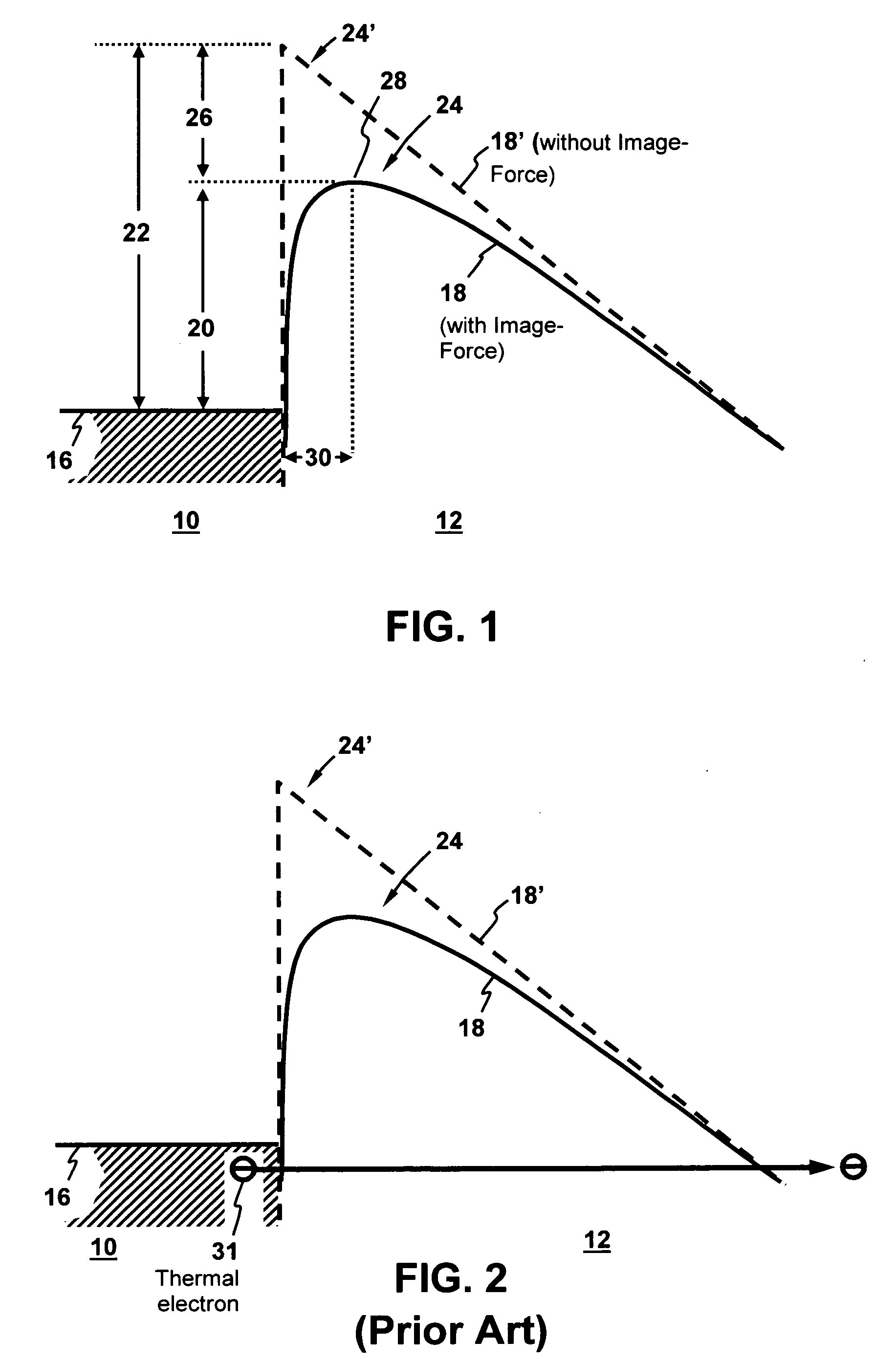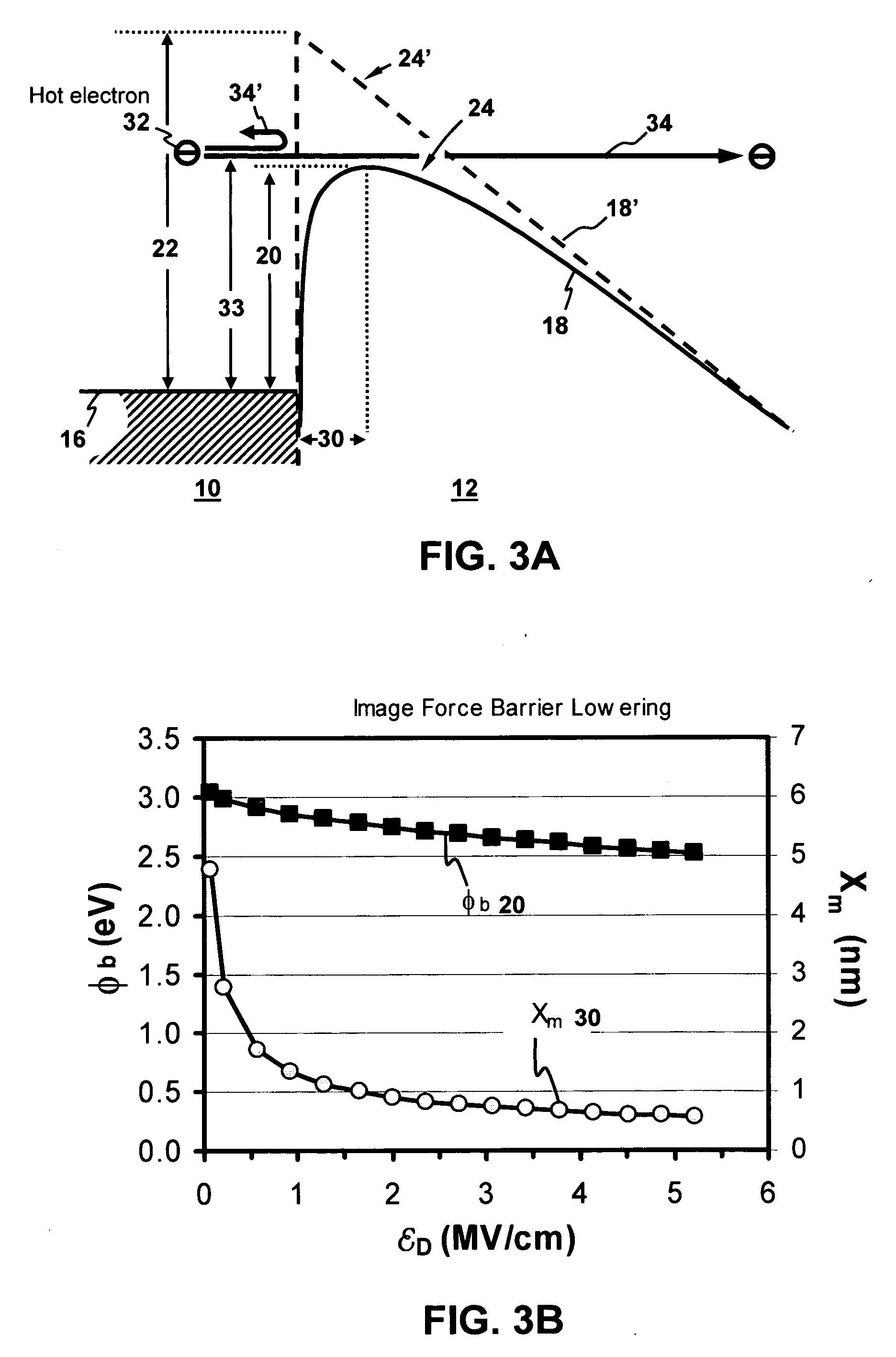Method and apparatus transporting charges in semiconductor device and semiconductor memory device
a semiconductor and memory device technology, applied in semiconductor devices, radio frequency controlled devices, instruments, etc., can solve the problems of poor injection efficiency, high voltage to support memory operation, and all the above mechanisms and attempts
- Summary
- Abstract
- Description
- Claims
- Application Information
AI Technical Summary
Benefits of technology
Problems solved by technology
Method used
Image
Examples
embodiment 100
[0160] Embodiment 100
[0161]FIG. 22 shows a cross-sectional view of cell architecture 100 in accordance with one embodiment on cell structure of the present invention. Referring to cell 100 of FIG. 22, there is shown a conductor-filter system 59 of the type described in connection with FIGS. 7, 9, 11 and 13, a conductor-insulator system 60 of the type described in connection with FIGS. 1, 5 and 6, a charge storage region (“CSR”) 66 in the form of a floating gate (“FG”) 66100, and a channel dielectric (“CD”) 68. The conductor-filter system 59 comprises a tunneling-gate (“TG”) 61, and a filter 52, wherein TG 61 corresponds to the conductor of the system 59. The filter 52 provides the band-pass filtering function as described in connection with FIG. 7, the charge-filtering function as described in connection with FIGS. 10, 12A, 13 and 14, the voltage divider function as described in connection with FIG. 12B, and the mass-filtering function as described in connection with FIG. 15. In a p...
embodiment 200
[0169] Embodiment 200
[0170] Turning now to FIG. 23, a slight variation of the cell 100 of FIG. 22 is presented in a memory cell 200. The cell 200 is in all respect except one the same as cell 100 of FIG. 22. The difference is that instead of a conductive region of FG 66100 as CSR 66, the cell 200 is provided with a plurality of spaced-apart nano-particles 66200 formed in nanometer scale as CSR 66. The nano-particles 66200 is typically in an oval shape having a dimension in the range of about 2 nm to about 10 nm, and is shown contacting CD 68 and formed in RD 64. The RD 64 is shown in a single layer and can be a layer of a stack of different dielectrics, such as a layer of oxide / nitride / oxide stack. The nano-particles as the storage sites can be silicon nano-crystals each in an oval shape having a diameter in the range of about 2 nm to about 7 nm, and can be formed by using well-known CVD technique. The nano-particles can be other types of semiconductor materials (e.g. Ge, SiGe alloy...
embodiment 300
[0172] Embodiment 300
[0173]FIG. 24 provides cross sectional view on a memory cell 300 of another embodiment in accordance with the present invention. The cell 300 is in all respect except one the same as cell 100 of FIG. 22. The difference is that instead of a conductive region for CSR 66, the cell 300 provides a CSR 66 of trapping dielectric having a plurality of trapping centers (traps 66300). The dielectric CSR 66 uses traps 66300 as the charge storage sites and can be a nitride layer formed, for example, by using LPCVD (Low-Pressure-Chemical-Vapor-Deposition) technique well-known in the art. Other dielectrics such as HfO2 and ZrO2 having traps of a deeper trapping energy can also be considered as material for the trapping dielectric.
[0174] Both cells 200 and 300 utilize scheme storing charges in localized charge storage sites that are in the form of nano-particles 66200 and traps 66300, respectively. These cells can be operated in similar way as that illustrated for cell 100 in...
PUM
 Login to View More
Login to View More Abstract
Description
Claims
Application Information
 Login to View More
Login to View More - R&D
- Intellectual Property
- Life Sciences
- Materials
- Tech Scout
- Unparalleled Data Quality
- Higher Quality Content
- 60% Fewer Hallucinations
Browse by: Latest US Patents, China's latest patents, Technical Efficacy Thesaurus, Application Domain, Technology Topic, Popular Technical Reports.
© 2025 PatSnap. All rights reserved.Legal|Privacy policy|Modern Slavery Act Transparency Statement|Sitemap|About US| Contact US: help@patsnap.com



